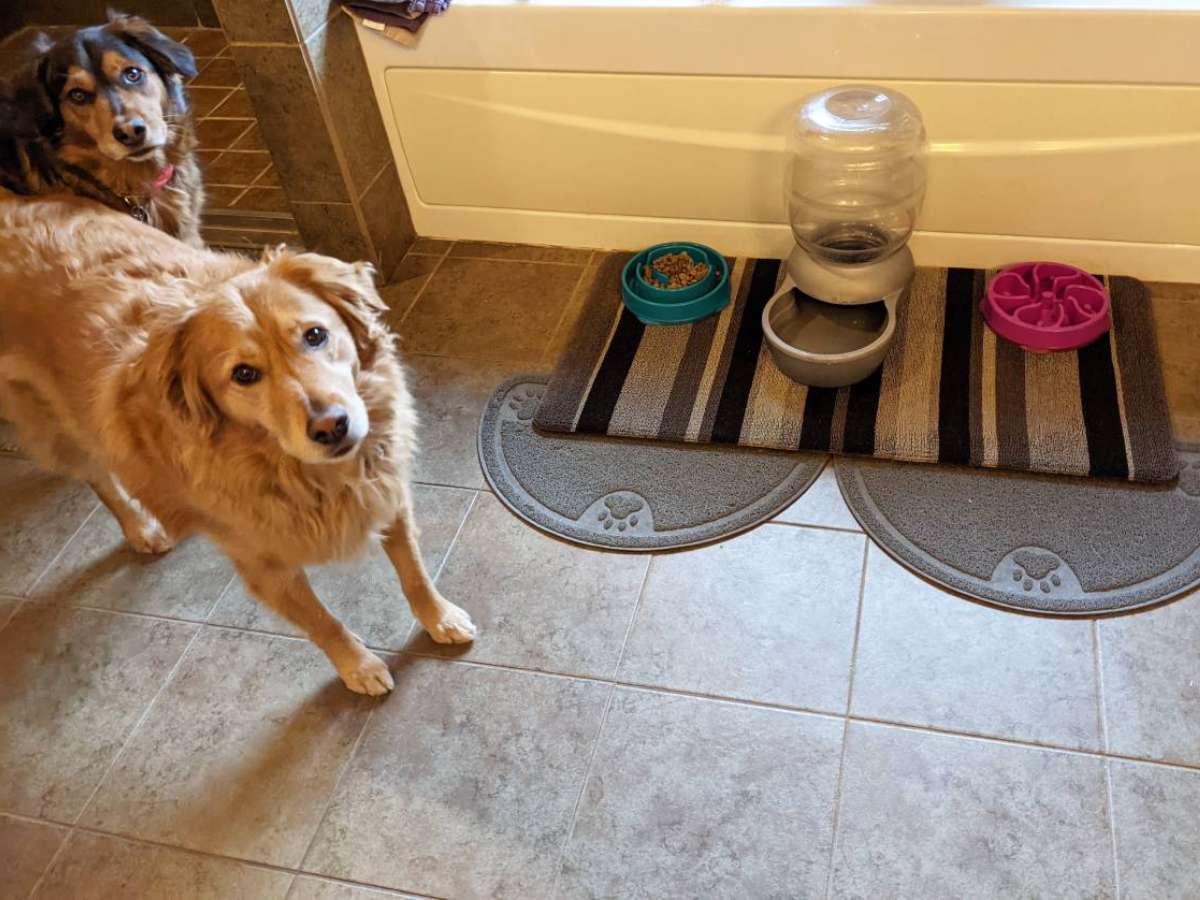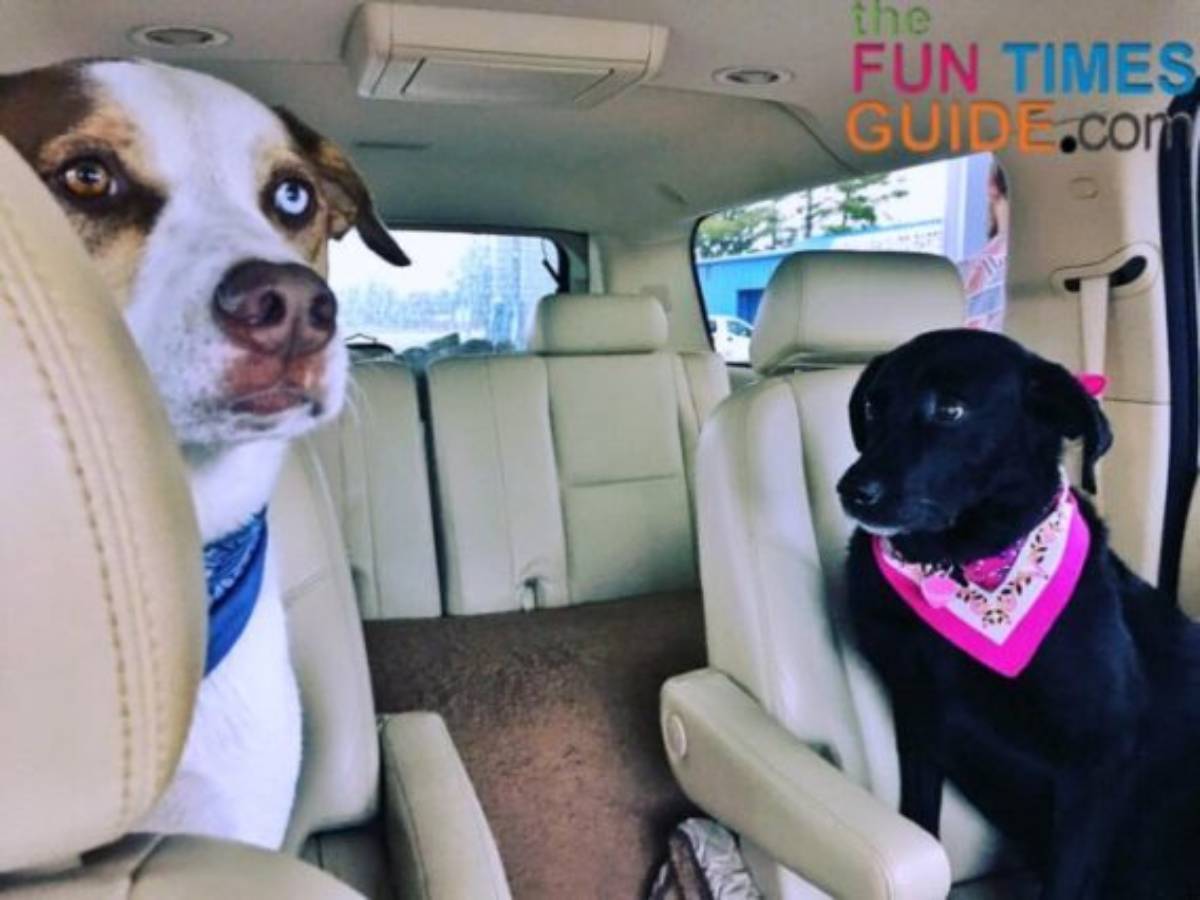We’ve seen plenty of rabbits — both adults and babies — in our backyard over the past several years.
Sometimes they’re running past our yard. Sometimes they’re running through our yard. And sometimes they’re hiding out in our yard — temporarily.
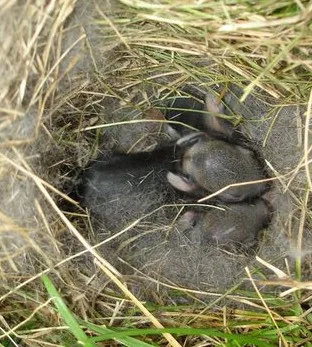
But this year they decided to make their home in our yard… and stay!
I’m going to tell you exactly what we did and how we kept our dog away from the bunnies (and the nest) in a minute.
But first, I want to get right to the takeaways that will be most helpful to you if you are in a frantic situation with your dog and some baby bunnies… right now!
Following is everything I’ve learned about dogs and bunnies over the past several years — including:
- The 4 things you should do immediately when you find a hurt bunny rabbit
- Tips for helping the baby bunnies survive after your dog has discovered their nest
- How to keep your dog from hurting baby rabbits (now and in the future)
- When to worry about a bunny’s health and safety and when not to
- My experience with rabbit rescue organizations
- Who to contact when you’re worried about baby bunnies
Dogs vs. Rabbit Nests: 3 Weeks Of Caution
Let me tell you, when a pregnant rabbit digs her den (usually, a very deep rabbit hole) in your backyard, you’re pretty much stuck with having rabbits as guests in your dog’s space for at least 3 weeks — until those bunnies are big enough to venture out on their own. (Which, of course, creates a whole new set of circumstances, because dogs like to chase cute little things that hop!)
Baby rabbits start to leave the nest when they are 15 to 20 days old. By 3 weeks of age, they are on their own. A 3-week-old bunny is the size of a chipmunk, has open eyes, ears that stand erect, normal rabbit fur, and can hop. If you find a baby rabbit that looks like this, they are meant to be on their own and they don’t need your help to survive at this point.
According to Rhonda DeVold, a licensed veterinary technician, licensed rehabilitator and director of a wildlife rehabilitation program, and a veterinary diagnostic microbiologist:
Cottontail rabbits make their nests in small depressions in the grass. The nests are lined with fur from the mother and loosely covered with grass. They are frequently disturbed by people when they are mowing their grass or raking. In addition, dogs and cats find these nests and often kill or injure the babies.
~ University of Minnesota
Unfortunately, dogs are dogs.
And dogs & wildlife don’t always mix — no matter how cute they are together.
What If Your Dog Catches A Rabbit?
I’ve often wondered what we should do, on those rare occasions when the dog actually catches wildlife… but doesn’t hurt or kill it.
Here’s what I’ve learned are the 4 most important things to do:
#1 – If your dog has found a baby bunny rabbit…
You should leave it alone (if it’s big enough to hop away) OR put it back in the nest (if it’s a newborn).
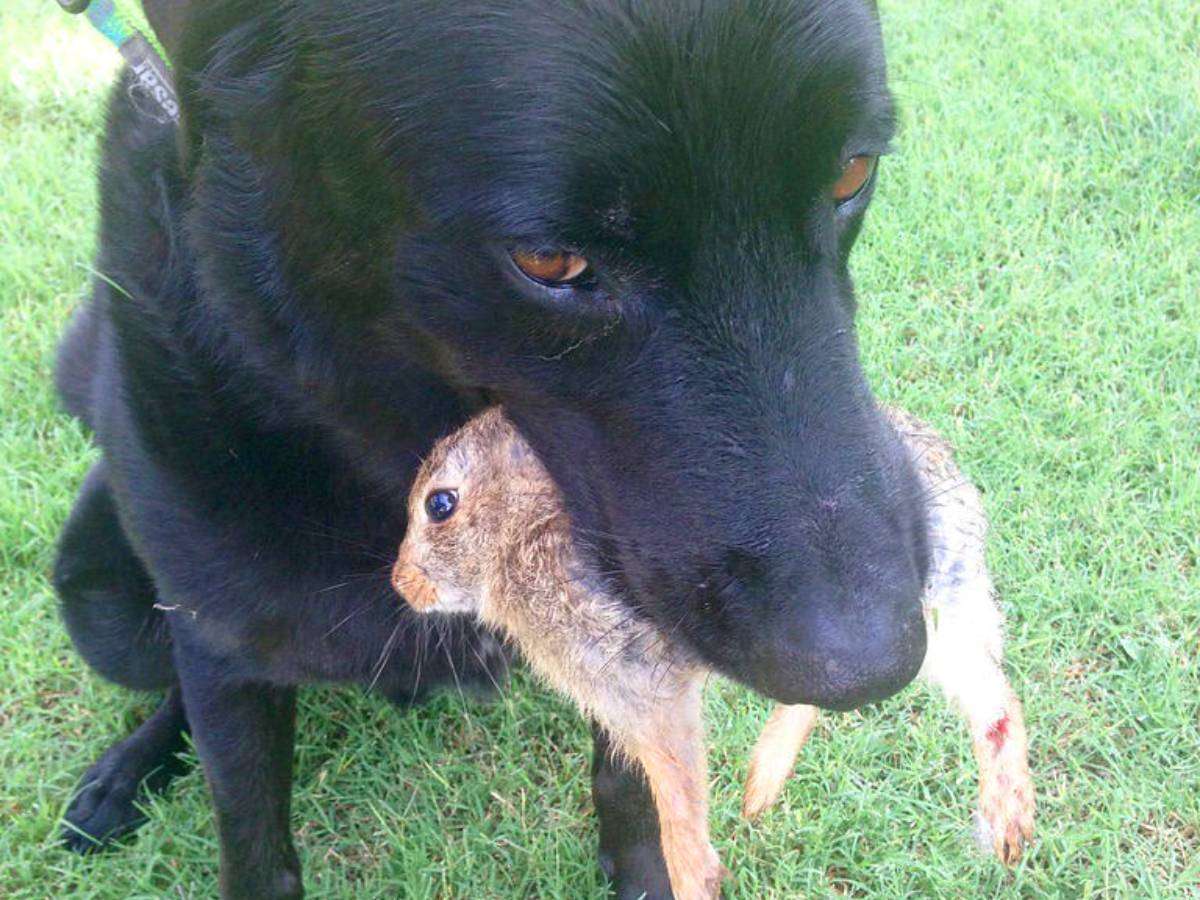
Even with a newborn bunny, as long as you put it back in its nest (which is usually around a tree or shrub), it should be fine.
The mama rabbit will come back to the nest.
And if the nest has been greatly disturbed by a lawnmower or a dog, you should put all the babies and the original bedding back in the nest where it was — the mother won’t mind at all.
We understand the desire to help, it’s really a good thing and we are glad people have such compassion toward the wild animals. However, healthy babies probably have a momma out there hunting or maybe scouting a new area and will be back for them eventually. You’re truly doing a disservice to the wild critter when you take them from their habitat. For instance, wild rabbits do not do well at all when in captivity. When you bring in little baby bunnies you have signed their death warrant. Momma only comes around twice a day to feed them and just imagine her coming back to an empty nest!
~ VetTechs
I’ve got lots of great tips to help you keep your dog away from the bunnies below — including a simple laundry basket trick!
#2 – If you (or your dog) has touched one of the baby bunnies…
It’s okay!
The myth that a mother rabbit will abandon her babies if you touch them is untrue.

You might not see her around her babies, but that doesn’t mean she’s abandoned them.
The fact is mother rabbits don’t stay with their young the whole time. They simply visit the babies once or twice a day to feed them – usually between dusk and dawn. The mother stays away so that she doesn’t attract predators to the nest.
If a rabbit nest is disturbed or moved, replace all of the fur inside the nest and cover the nest well with dry grass. The mother may return to care for her young. If a baby is placed back in a nest, touch all the babies so they all smell the same. The mother will not reject the babies if you handle them. There has been good success with placing rabbits back in the nest and the mother returning later and taking care of her young. Before moving the babies from the nest, check to see if the mother rabbit returns. Chances are you won’t actually see the mother returning because she usually feeds her babies during the night. Check the babies bellies before and after an evening has past. Their bellies should be full in the morning. Also, place a couple strands of string over the nest to see if the nest was disturbed. These are indications that the mother was there. If at all possible, it is best to let the mother rabbit raise her babies. Rabbits are hard to raise!
~ University of Minnesota
While you should not disturb the bunnies in their nest, here’s how to determine the likelihood that a baby bunny rabbit will survive (with photos).
#3 – If you cannot put the baby bunny back in its nest…
Put the bunny in a small box.
The wildlife rehabilitators at Walden’s Puddle say you should place the bunny in a small box with some of the bedding from its actual nest. (If that’s not possible, then use soft rags.)
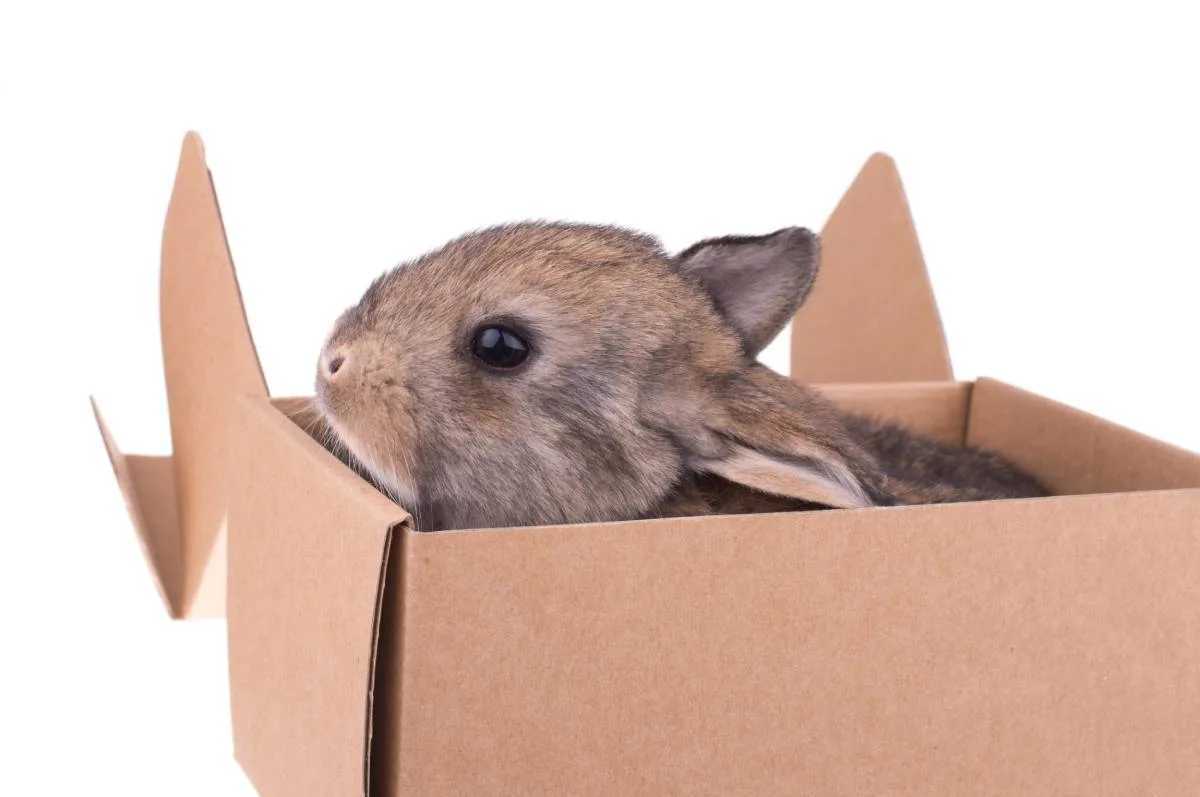
Keep the baby rabbits in a warm, dark and quiet place — away from children, household noise, other pets, and bright lights. (TIP: You can place a heating pad on LOW underneath half of the box — but not inside the box.)
- If the bunny’s eyes have not opened yet it is less than 10 days old and you need to take it to a licensed rehabilitator as soon as possible. Do NOT attempt to feed or hydrate the bunny.
- If the bunny’s eyes have opened, you can put some clover and/or dandelion greens from your yard into the box – and spritz a bit of water on the greens for hydration.
Baby bunnies are hard to care for and rehab. These instructions are good for the 24 hour period that it might take for you to get the baby rabbit to a licensed wildlife rehabilitator (see list below).
#4 – If the baby bunny is hurt…
Call a wildlife rehabilitator right away for help.
Baby bunnies are incredibly fragile and do not take handling by humans (or dogs) well. They will die of stress if handled improperly.
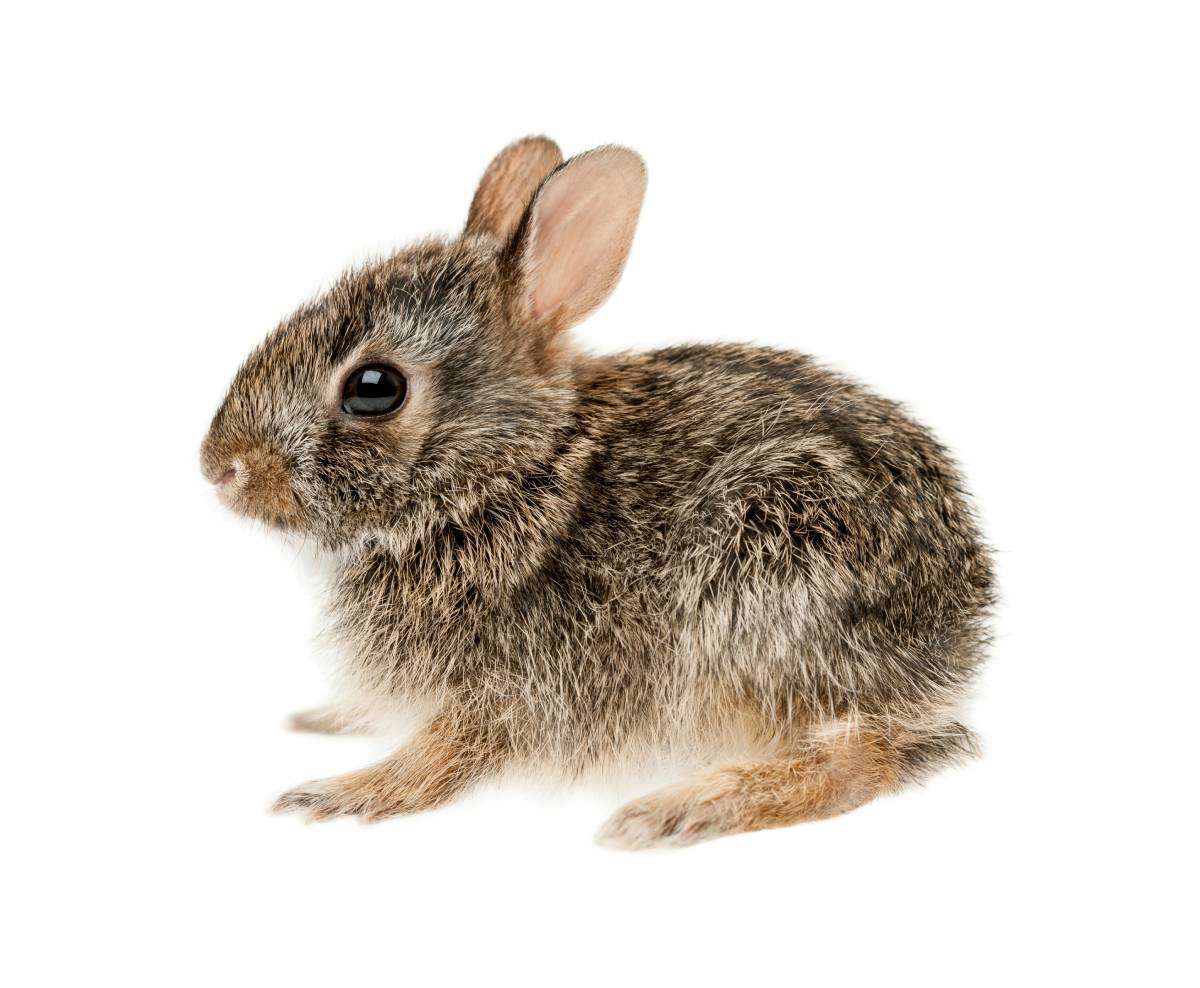
Even a playful dog can cause serious injuries to a baby rabbit — and you may not be able to tell just by looking if your dog has injured the bunny or not.
Dogs often grab small animals and shake them, which can cause severe injuries or death. Plus, the stress and fear alone from being cornered by a dog (or a human) can actually trigger a heart attack in a rabbit.
Even just being scratched by your dog could be harmful to the bunny — causing puncture wounds, internal bleeding, or broken bones.
If the bunnies are caught by a cat or dog and have been bitten, put them in the warm, dark box and call a wildlife rehabilitator for help. NOTE: Cats have bacteria in their mouths that will cause a rabbit to die, usually within 3 days, if left untreated.
~ Messinger Woods
Very rarely can hurt bunnies be rehabbed. It’s best to leave them in their natural environment, and let nature play its course.
Very young wild baby bunnies with eyes closed and ears back rarely survive in captivity, even given the most expert human care — and so it is very important to determine whether they really need help. Try to assess whether the infants seem warm and healthy or cold, thin, and dehydrated.
~ Rabbit.org
My Dog’s First Encounter With Baby Bunnies
Recently, some newborn baby bunnies appeared in our back yard, and my dog took a keen interest!
Remember around Easter time when I wrote about our dogs’ Easter Egg Hunt which actually turned out to be their hunt for rabbit poo in our grass?…
Well, all those rabbit pellets left behind must’ve signaled some form of breeding ritual because here we are now 4 months later and we’re dealing with a whole FAMILY of rabbits.
Now, there’s a mama and her 5 baby rabbits that find themselves the center of attention these days in our backyard — especially in the eyes of our big dog, Destin.
I swear, the very day the bunnies were born, Destin must have smelled it. The moment he was let outside into the backyard that particular warm summer night, he bolted directly to the rabbit hole underneath our air conditioner.
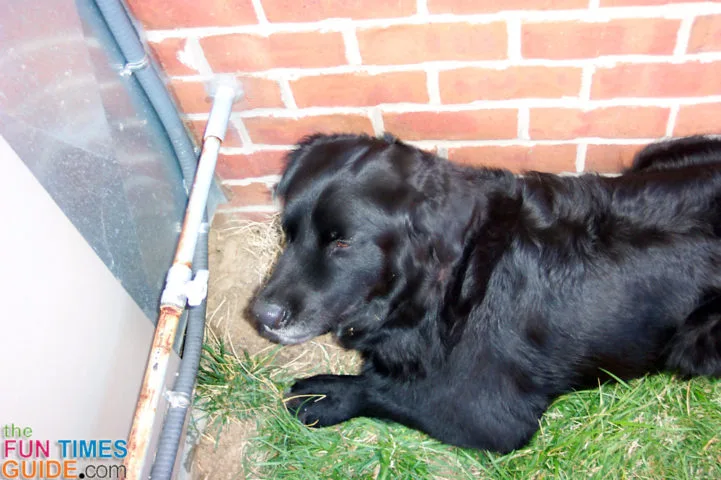

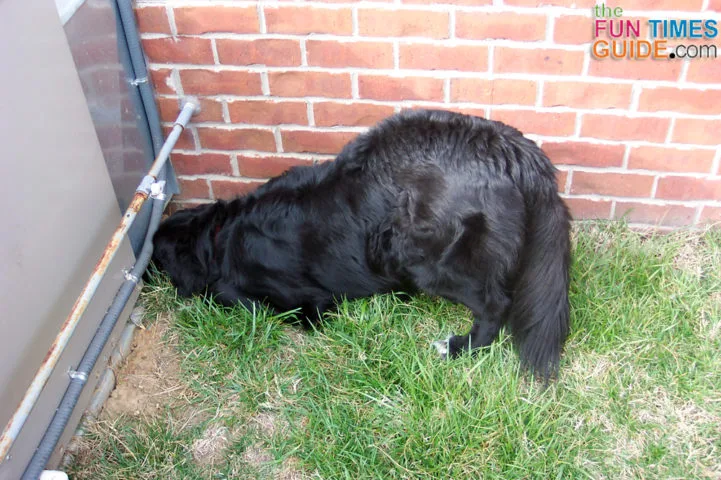
Normally, he could care less about that particular area of the yard. But on this day, he was on a mission to find whatever smelled different back there, and nothing was going to stop him! This is how we discovered the rabbit den.
Unfortunately Destin, felt compelled to remove two of the newborn bunnies from the den (must be a dog thing). And in his haste, he was a little too rough for my liking with one of the fragile newborn bunnies.
Since he had never been face-to-face with helpless four-legged wildlife before, neither he nor I knew how he would (or should) react.
Fortunately, it was clear that he didn’t want to hurt the bunnies — he was just curious. And it seemed more like he wanted to help them.
He ever-so-gently carried another one of the bunnies away from the rabbit hole and into the middle of the yard. When I asked him to “drop it”, he did (reluctantly). Then he sat over it and watched carefully, as I moved that bunny from within his reach.
Boy, did he become protective of that baby bunny. Not in an aggressive way, but in a motherly (or would that be fatherly?) kind of way.
My dog wanted to see every single thing I was doing with the bunny. He wanted to smell everything that bunny had touched. And each time the bunny would squeak (I have to admit, I’d never heard a bunny make noises before either), he wanted to be there to make sure it was alright.
Baby Bunnies CAN Survive On Their Own
After separating the dog from the bunny rabbits, I went back to the area by myself to see exactly what we had going on back there.
There appeared to be 2 more bunnies still deep in the rabbit hole:
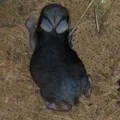
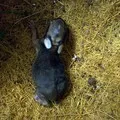
I put the 3 that Destin had “rescued” back with the others, and prayed that the mother would move them the next morning.
She didn’t. But we didn’t hear them crying. And upon closer inspection, we could see that they were still wriggling inside their den. So we knew they were still continuing to be fed by the mother. Whew!
I have since learned that mother rabbits are one of the only mammals who cannot pick their babies up to move them to a better spot. Also, rabbits are very specific about the location of their nest – moving it even a foot or two away will cause the mother to abandon it.
How To Keep Your Dog Away From Bunnies & Nests In Your Yard
Since this has happened several times with us through the years (and with several of our other dogs, after Destin left us), I’ve done even more research and found the following tips to be the most helpful.
The hardest part is finding a way to keep your dog away from the nest!
So first I’ll tell you what we did. Then, I’ll share some clever tips from others that I’ve read in some of my private dog groups online.
My Own Experience:
For a few days, we kept our dog on a leash anytime he was out in the yard — which felt odd and looked odd, since we have a fenced-in backyard.
It was a little inconvenient too. Because whenever the dog went outside to use the bathroom, we now had to be fully dressed and ready to go outside too… all 17 times a day! (That just takes the fun out of having a fenced in backyard, wouldn’t you agree?)
But we wanted to do this to make sure that our dog wouldn’t disrupt the newborn bunnies’ first days of life any more than he already had.
In the end, all of the bunnies survived — and we eventually got to see some of them venturing out on their own.
Tips From Fellow Dog Owners:
At the very least, you will need to go outside with your dog when they potty to make sure they don’t go near the nest. It’s best to keep your dog on a leash in the yard until all of the bunnies are gone. (They usually hop away on their own at about 3 weeks of age.)

The absolute best idea I’ve heard is to cover the nest with a laundry basket that has slats big enough for mama to squeeze in but not your dog. If your laundry basket doesn’t have slats big enough for the rabbit, then just cut out a small portion on one side of it – so mama rabbit can get to the nest but your dog can’t get to it.
To keep the laundry basket securely over the nest, you can use some thick plastic stakes (the type used with landscaping projects) or metal stakes (like those used with camping tents) to stake the laundry basket down and keep it in place – so your dog or any other animal won’t tip it over. Or, you could simply put something flat and heavy on top of the upside-down laundry basket.
You could also turn a wheelbarrow (or something else big with one open side) upside down and place it over the nest. You might need to prop it up with some wood — so your dog can’t get to the nest but the mama rabbit can.
Finally, you could use chicken wire (or landscape fencing) to create a barrier around the nest and keep your dog from entering that particular area in the yard. Blocking off that part of your yard from your dog will give the bunnies enough time to mature and give mama enough time and space to tend to her babies.
Fortunately, baby bunnies mature very quickly and they’ll be gone in no time. Yes, it’s an inconvenience for you in the short term, but you’re helping these little bunnies to survive their lifetime.
UPDATE: A Dog’s Instinct Never Wanes
It’s been a few years now, and to this day my dog still displays his mothering and protective feelings for all of the baby rabbits that have been birthed in our yard.
Every time he discovers a new nest of bunnies, he immediately runs to get a close-up look and check on them. And whenever he knows we have bunnies in the yard, he continues to do that every time he gets let out into the backyard. It’s so sweet. (Yes, I do realize not all dogs are this gentle with the wildlife they discover — we know that we are very lucky. And we still watch him closely to make sure he doesn’t get too close.)
He also regularly monitors the backyard from the window next to his dog crate — watching closely for any new activity out there. It’s as if the backyard is “his domain” and he watches over it with pride.
You see, dogs have a strong predatory instinct — and rabbits are very vulnerable prey animals for most (but not all) dogs:
- Breed matters. Dogs bred for hunting (like terriers and hounds) tend to have a stronger prey drive and be more likely to harm a rabbit.
- Size matters. Larger dogs are more likely to inflict serious injuries on bunnies than smaller dogs.
For us, only once has there been a close call…
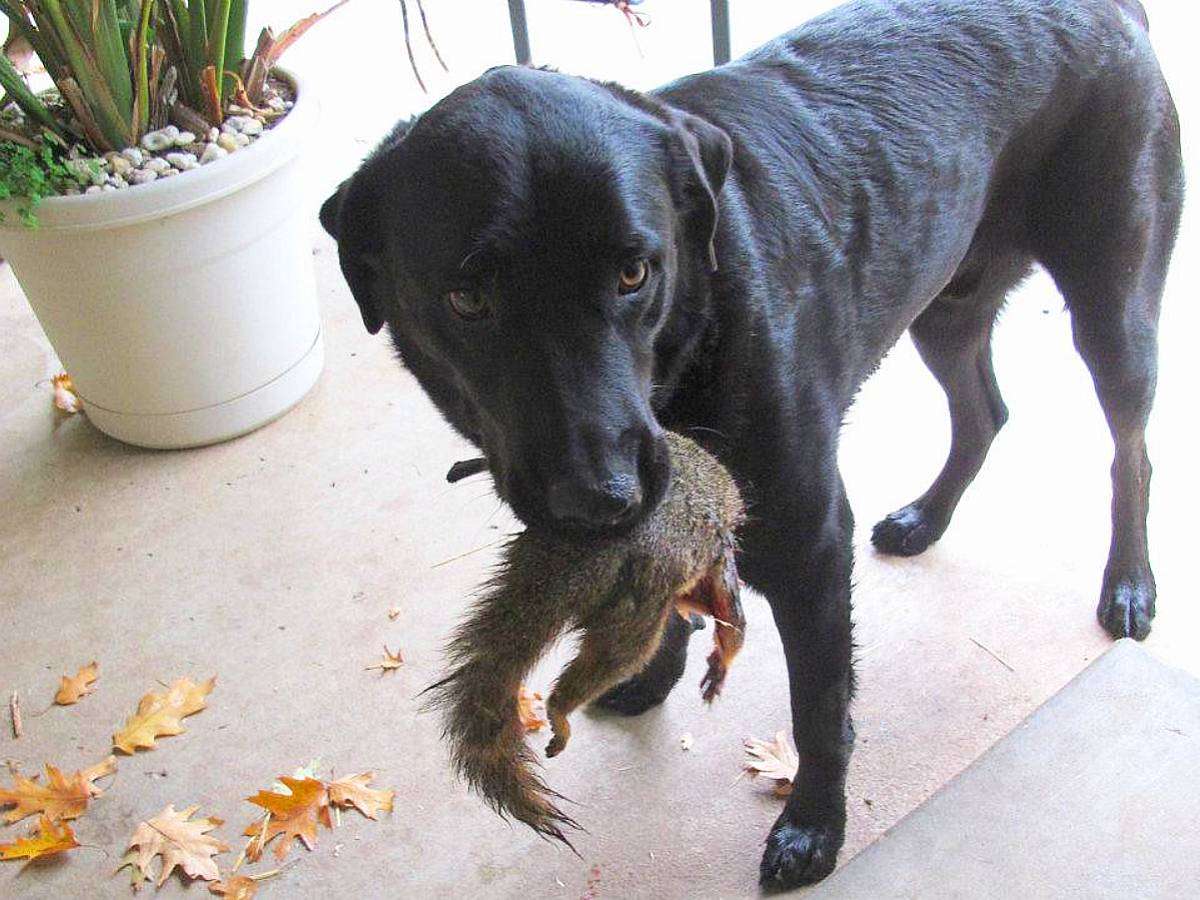
Destin chased one of the quick little baby rabbits around the yard until it escaped under the fence. I do think it was a playful chase, but you never really know. That’s why we still do our best to keep him away from any rabbit nests and focused on other things whenever we discover new nests.
We are most thankful that our dog doesn’t seem to want to hurt the wildlife that ventures into our backyard.
He’s always been like this. A “caretaker” kind of dog. He’s like that with everything — the grasshoppers… hurt birds… and even the dead crawfish we found in the yard one day.
He kept a watchful eye over that dead crawfish (which is the only way I even knew it was there), and he looked very sad when I picked it up and threw it in the creek.
Has your dog had an encounter with a bird or a rabbit? The National Association of Wildlife Rehabilitators website walks you through what to do next. They cover everything!
A Word About Bunny Rescue Organizations…
For the record, the morning after we discovered these newborn bunnies, I tried to contact the local bunny rescue in my area. (I was actually surprised that there was one.) But no one ever answered — no matter what time I called over the next couple of days.
I have since located an email address for that organization which might have yielded better results.
But at the time, I was just so frazzled and my Internet search results weren’t yielding anything meaningful… or local.

The thoughts that kept running though my mind when I had the dog and newborn bunnies in front of me were:
- “How am I going to keep my dog away from the bunnies?”
- “I’ve barely got enough time in my day (it was a very busy week, and hubby was out of town), it would probably be difficult to schedule a meeting or “pick-up” with a rescue agency anyway.”
- “What am I going to do with these helpless newborn rabbits?”
- “They’re wildlife!… Surely the bunnies can take care of themselves.”
- “Bunny rescue groups are probably only interested in abused or neglected ‘family pets’, rather than wildlife anyway.”
Fortunately, it all worked out in the end, and the bunnies survived on their own just fine — after we kept the dog away from them.
I just wish that I would’ve had a better idea of my options at the time… because I certainly wasn’t thinking clearly in the heat of the moment!
Hopefully, this article will help others who find themselves in the same situation.
The Bottom Line
So, if your dog crosses paths with a baby rabbit in your backyard, my advice to you would be this:
If the bunny is not injured… Just return the baby bunny to the nest and leave them be.
If the rabbit is hurt:
1. Put it in a warm, dark box (like a shoebox).
2. Contact a wildlife rehabilitator, a rabbit veterinarian, or a rabbit rescue group in your area. If you can’t find anyone near you, then contact your state game department (they issue permits to wildlife rehabilitators).
The #1 thing I’ve learned is it’s best to let wild animals remain wild, and don’t try to nurture them or care for them yourself. They are less likely to survive if separated from their natural environment.
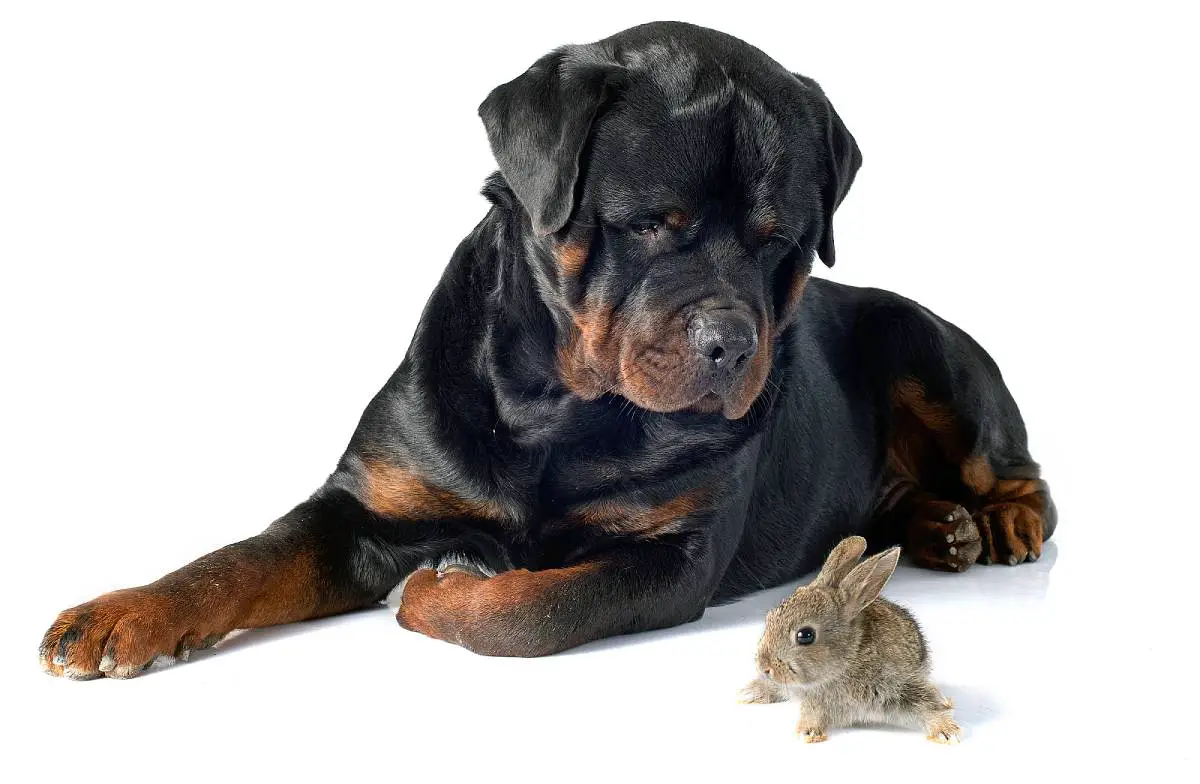
UPDATE: It happened again!
Our youngest dog recently discovered a rabbit nest in our backyard.


